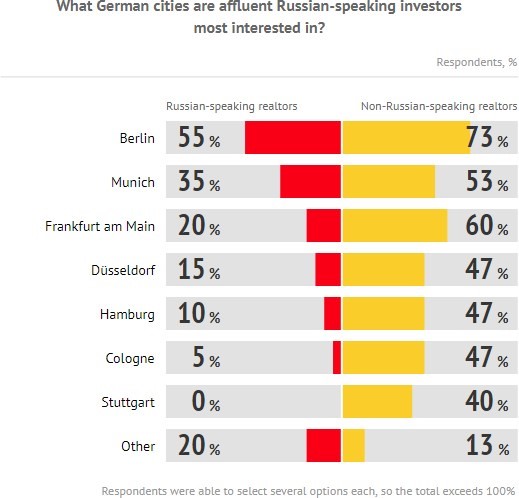Russians spent €1.1bn on international real estate in 2017, up by a quarter (26%) y/y, and the volume of cross-border transfers topped $870mn, according to the Central Bank of Russia (CBR), reports international real estate agency Tranio.
“This means the volume of Russian investment in foreign real estate grew for the first time in four years, though it is still half the total of its peak in 2013 ($2.2bn),” says Svetlana Larionova, who heads up the Russian real estate division at Tranio.
The Russian Central Bank has been publishing data on cross-border property purchases since 2009. Russian investment into overseas property grew by a quarter (25%) each year between 2009 and 2013. But the amount spent on international real estate rose 30% in the forth quarter of last year, compared to the same period in 2016, up from $249mn to $324mn, the bank said.
The Cypriot banking crisis of 2012-2013 showed that most of the capital flight from Russia is not oligarch cash looking for a safe haven, but largely made up by Russia’s middle class looking for a safe home for their life savings as they still don’t trust the domestic banking sector. Since the Cypriot banking sector blew up in those years, this money – many billions of dollars – has been looking for a new home and many Russians have decided to park their spare cash in real estate rather than bank deposits. The wall of cash has been so large that many international real estate markets have been affected: a large part of the rise in Germany’s property market has been ascribed to Russian purchases of apartments and commercial property in recent years.
The total amount of money sent abroad by Russian nationals in 2017 was $31.3bn, which exceeds the 2016 figure ($24.8bn) by 26%. The most popular destinations to send funds to were Switzerland, the UK, Latvia and the US, according to CBR data. In keeping with the trends from recent years, foreign currency deposit rates continue to decline.
“So Russian nationals are looking more actively for reliable alternatives for capital maintenance and accumulation. We believe that the volume of capital outflow from Russia for property transactions will continue to rise in 2018, largely through investment purchases. The main investment flow will be aimed at the traditional market leaders: Germany, Spain, the UK and the US,” says George Kachmazov, Tranio’s managing partner.
As for property types, the most popular category is still apartments, which can be rented, whereas wealthier Russians are looking for commercial properties such as shopping malls and hotels, where the investment has a ticket size of $1mn-$5mn.
“From our experience, 90% of investors buy property to lease it, while the other 10% consider more complex value added projects. The main motive is security: everybody wants to maintain their capital, guarantee a comfortable retirement for themselves and subsequently pass the property on to their children,” adds Kachmazov.


Features

Will quiet Sino-Russian stranglehold damn West’s moves to source more uranium from Kazakhstan?
Brief halt at Kazakh-Canadian producer sparks investor concern and suspicion over Moscow factor.

COMMENT: Business and Government in a new partnership for Uzbekistan’s future
Just a decade ago, the idea of building a modern ski resort in Uzbekistan felt like wishful thinking. Its snow-capped mountains were admired for their beauty, but few imagined they could attract international tourists, athletes or investors.

UKRAINE REMONT: Cement sector ready for reconstruction
Ukraine’s cement producers are confident they will be able to produce enough of the material to fully cover domestic demand during reconstruction.

India and Pakistan face-off following killing of 26 tourists as water politics comes into play
After the killing of 26 tourists, tensions are boiling over between India and Pakistan. The perpetrators of the attack, The Resistance Front, is widely believed to have ties to the Pakistani state and military.





